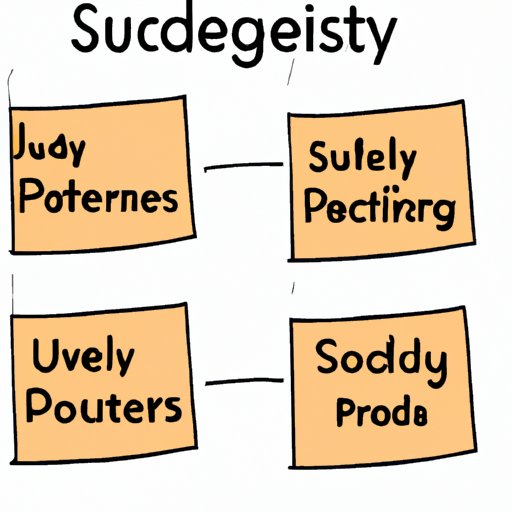Introduction
When creating user stories, it’s important to consider the impact they will have on your audience. To address this, we present a problem that often arises when writing user stories, demonstrating why it’s important to include the right elements to improve your productivity and quality. Additionally, the significance of user stories in product development is discussed, followed by an overview of what this article entails.
The Power of Three: How Including These Key Elements in Your User Stories Can Improve Productivity and Quality
It’s not uncommon to find that user stories lack sufficient depth and detail. But simply including more information doesn’t guarantee an effective story. Using three essential elements can help improve the productivity and quality of your user stories.
The Three Essential Elements of Compelling User Stories
The first element of a user story should describe who the user is. For example, a social media app may have users who post pictures or videos. This element sets up the context of the story.
By including this detail upfront, the rest of the story can focus on the user’s goals. This contributes to a more effective explanation of the problem you are trying to solve, which can help increase the precision of the solution.
Consider the following example:
As a freelance writer, I want to edit text on my phone because I need to make quick changes to my work on the go.
By identifying the user as a freelance writer who needs to make quick edits on the go, we can develop a more engaging solution that serves this specific need well.
Crafting User Stories: Don’t Forget These Three Key Components
The second element consists of the user’s motivation. What is it that drives the user to carry out the task detailed in the user story?
Knowing this information allows you to design solutions that are tailored to the user’s needs. They may have an urgent need that requires a fast solution, or they may have a problem that has been bothering them for a while and they need a lasting solution. In both cases, understanding their motives will allow you to create a story that is more relatable and useful to them.
Take, for example,
As a freelance writer, I want to edit text on my phone because I need to make quick changes to my work on-the-go, so that I can send my work promptly to my clients.
In this user story, the user’s motivation is to send the work on time to their clients. Considering this motivation can influence the design of a solution that allows users to edit and send work promptly via their phones.
The Anatomy of an Effective User Story: Including These Three Elements is Key
The third element is the end goal. What does the user hope to achieve by using the product? For instance, a social media app would want users to post pictures and videos seamlessly. Having the end goal in mind provides a focus for the user story, and allows the development of a solution that leads to the expected outcome.
Using the same example as before,
As a freelance writer, I want to edit text on my phone because I need to make quick changes to my work on-the-go, so that I can send my work promptly to my clients, and reduce turnaround time.
This story’s end goal is to reduce turnaround time. Knowing this goal influences the creation of a solution that enables users to quickly edit and manage their work on the go.
Maximizing User Story Impact: Identifying and Including the Top Three Elements
Identifying which of these three elements are the most important to your audience allows the user story to focus on issues that matter the most to them. The most crucial aspect of the user story further describes the product, and offers insights on how it will solve the problem at hand.
The benefits of including the top three elements in your user stories cannot be overstated – effective user stories aid in the development of a product that meets the users’ expectations and needs. When users encounter a product that is most suited to them, they are more likely to make it a recurring part of their daily process.
Conclusion
In conclusion, creating user stories may seem overwhelming, but including the essential components of the user story outlined here can lead to stories that are more effective, and focused on the user’s needs. Focus on the user’s background, motivation, and end goal to develop compelling stories that represent the user well.
By utilizing this formula, you can craft user stories that lead to the development of impactful products. Now that you’ve learned about the vital components of effective user stories, we encourage you to start incorporating them into your writing, and watch as your productivity and quality improves.
